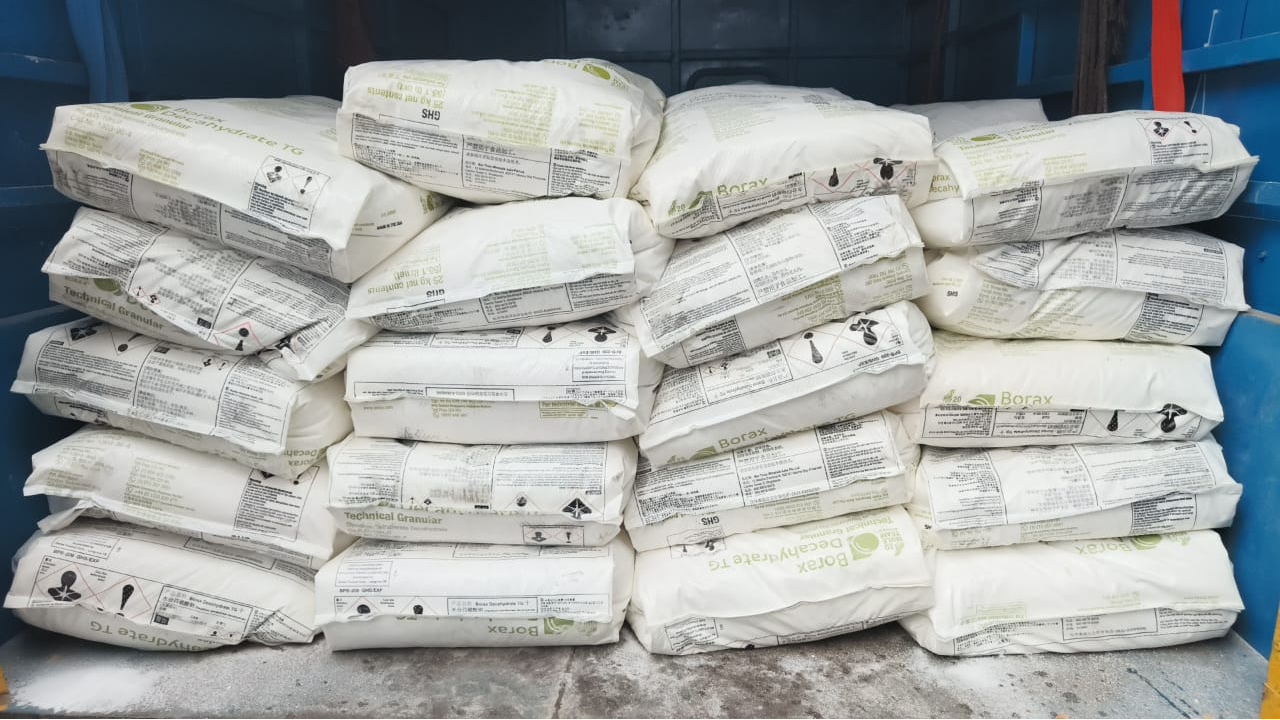
2025-04-28T11:59:58
Borax (also referred to as sodium borate, tincal (/ˈtɪŋkəl/) and tincar (/ˈtɪŋkər/)) is a salt (ionic compound), a hydrated or anhydrous borate of sodium, with the chemical formula Na2H20B4O7.[1][a] It is a colorless crystalline solid that dissolves in water to make a basic solution. It is commonly available in powder or granular form and has many industrial and household uses, including as a pesticide, as a metal soldering flux, as a component of glass, enamel, and pottery glazes, for tanning of skins and hides, for artificial aging of wood, as a preservative against wood fungus, and as a pharmaceutic alkalizer. In chemical laboratories, it is used as a buffering agent.[1][8] The terms tincal and tincar refer to native borax, historically mined from dry lake beds in various parts of Asia.[9] History Borax was first discovered in dry lake beds in Tibet. Native tincal from Tibet, Persia, and other parts of Asia was traded via the Silk Road to the Arabian Peninsula in the 8th century AD.[9] Borax first came into common use in the late 19th century when Francis Marion Smith's Pacific Coast Borax Company began to market and popularize a large variety of applications under the 20 Mule Team Borax trademark, named for the method by which borax was originally hauled out of the California and Nevada deserts.[10][11]

Have a question? Ask here!
Required fields are marked *